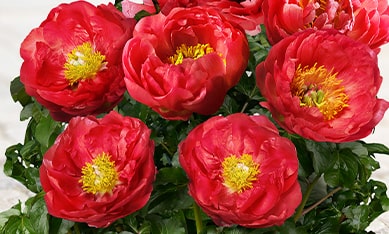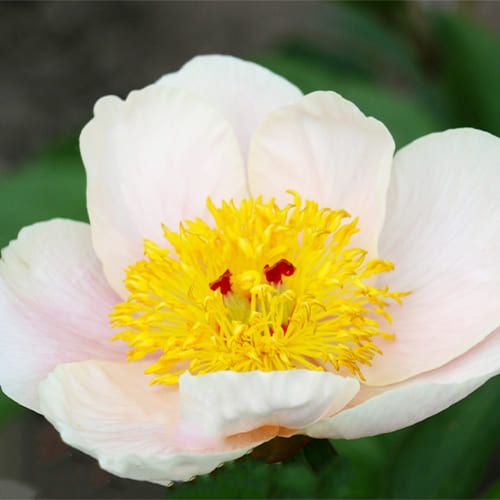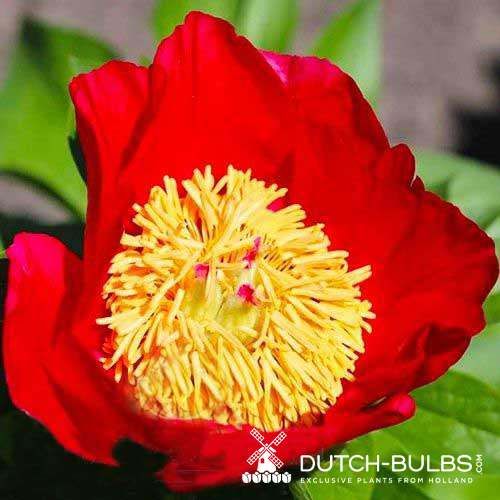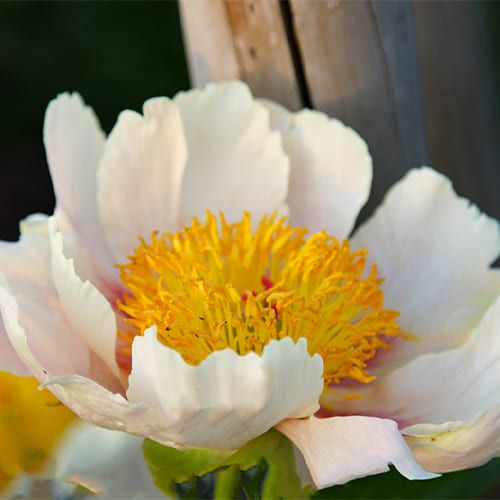
Japanese Peonies
Japanese Peonies
Last Reviews
The Basics of Japanese Peonies: Tips and Tricks for New Gardeners
Japanese peonies add an elegant touch to any yard or interior space. It is obvious why these plants have grown to be so popular in recent years given their delicate blossoms and vivid colours. This tutorial will offer you helpful advice and pointers to get you started if youre new to gardening and want to grow Japanese peony.
Japanese Peonies: What are they?
Asian peonies led directly to the Japanese peony, usually referred to as the Japanese tree peony. They are famous for their large, ruffled flowers and protracted blooming period. Japanese peonies can reach heights of six feet and have woody branches as opposed than typical peonies.
The Best Location for Japanese Tree Peonies
Its critical to select the ideal location for Japanese tree peonies when planting to ensure healthy growth. These plants do best in organically rich, well-drained soil. Also, they need a lot of light, so its better to put them where they will receive at least six hours of direct sunlight each day.
Japanese Peony Planting Flower
Dig a hole twice as large as the root ball of the plant before planting Japanese peony blooms. To encourage strong root growth, be sure to loosen the soil at the bottom of the hole. After planting, give the plant plenty of water, and mulch the area around the base to keep moisture in.
Finding the Perfect Spot: Where to Plant Japanese Tree Peonies for Optimal Growth

Japanese tree peonies are known for their stunning and delicate blooms, making them a highly sought-after addition to any garden. However, to ensure these plants thrive and produce the best possible blooms, its important to carefully consider where they are planted. Here are some tips for finding the perfect spot to plant your Japanese tree peonies:
Choose a Location with the Right Amount of Sunlight: Japanese tree peonies require at least 6 hours of direct sunlight per day to thrive. However, they can also benefit from some shade during the hot part of the day, especially in regions with extremely hot summers.
Ensure Proper Drainage: These plants prefer soil that is well-drained, as they are susceptible to root rot in overly wet conditions. Choose a location with good drainage or amend your soil with organic matter to improve drainage.
Provide Protection from Strong Winds: Japanese tree peonies have delicate branches and blooms that can be easily damaged by strong winds. Choose a location that is sheltered from strong gusts, such as near a wall or other structure.
Consider the Climate: Japanese tree peonies are hardy plants that can tolerate a range of temperatures, but they may struggle in extremely hot or cold conditions. Choose a location that is appropriate for your climate and avoid planting them in areas that experience severe temperature fluctuations.
By following these tips, you can ensure that your Japanese tree peonies have the best possible chance of thriving and producing stunning blooms.
Planting Japanese Peonies Flower: Tips and Tricks for a Successful Garden
Planting Japanese peonies is a rewarding experience that can add beauty and elegance to any garden. Here are some tips and tricks to ensure successful planting:
Prepare the Soil: Japanese peonies prefer soil that is rich in organic matter, so its important to amend your soil with compost or other organic material before planting.
Choose the Right Time to Plant: Fall is the best time to plant Japanese peonies, as it allows the plants to establish their root system before the harsh winter months. However, they can also be planted in the spring as long as they are planted early enough in the season.
Dig the Right Size Hole: When planting Japanese peonies, its important to dig a hole that is deep enough to accommodate the root ball and wide enough to allow room for growth. The hole should be at least 18 inches deep and 2 feet wide.
Plant at the Right Depth: Japanese peonies should be planted with the eyes (or growing points) of the plant just below the soil surface. If planted too deep, they may not produce blooms.
Water and Mulch: After planting, be sure to water your Japanese peonies thoroughly and add a layer of mulch around the base of the plant to help retain moisture.
Caring for Japanese Peonies: A Comprehensive Guide to Maintaining Healthy Plants
Caring for Japanese peonies is essential to ensuring healthy, vibrant blooms. Here are some tips for caring for Japanese peonies:
Watering: Japanese peonies prefer consistently moist soil. Water your plants deeply once a week or when the soil feels dry to the touch.
Fertilizing: Apply a slow-release fertilizer in the spring and again in the fall. Avoid fertilizers high in nitrogen, as this can promote leaf growth over flower production.
Pruning: Prune your Japanese peonies in the fall after the first frost. Cut back the stems to just above ground level and remove any dead or damaged foliage.
Disease control: Japanese peonies are generally resistant to disease, but fungal diseases can occur in humid climates. To prevent disease, ensure good air circulation around your plants and avoid overhead watering.
Winter protection: In colder climates, protect your Japanese peonies from harsh winter weather by adding a layer of mulch around the base of the plant.
Propagating Japanese Peonies: How to Expand Your Collection of These Beautiful Blooms

If you want to expand your collection of Japanese peonies, propagation is the way to go. Here are two methods of propagating Japanese peonies:
Division: Divide mature Japanese peonies in the fall, just as you would with herbaceous peonies. Dig up the plant and carefully separate the roots into smaller sections, each with a few buds. Replant the sections in well-drained soil.
Grafting: Grafting is a more advanced method of propagation that involves joining a stem or bud from one plant to the rootstock of another. This technique is often used to propagate Japanese tree peonies.
Your Guide to Buying Japanese Peonies: Tips and Advice for Choosing the Perfect Plants
When shopping for Japanese peonies, keep the following tips in mind:
Variety: Japanese peonies come in many different colors and forms. Consider what colors and shapes will complement your garden or home interior.
Size: Japanese tree peonies can grow up to six feet tall, while herbaceous Japanese peonies typically reach three feet. Make sure you have enough space for the type of Japanese peony you choose.
Price: Japanese peonies can be expensive, especially rare or newly introduced varieties. Consider your budget and shop around for the best prices.
Source: Purchase Japanese peonies from reputable nurseries or online retailers to ensure healthy, disease-free plants.

















